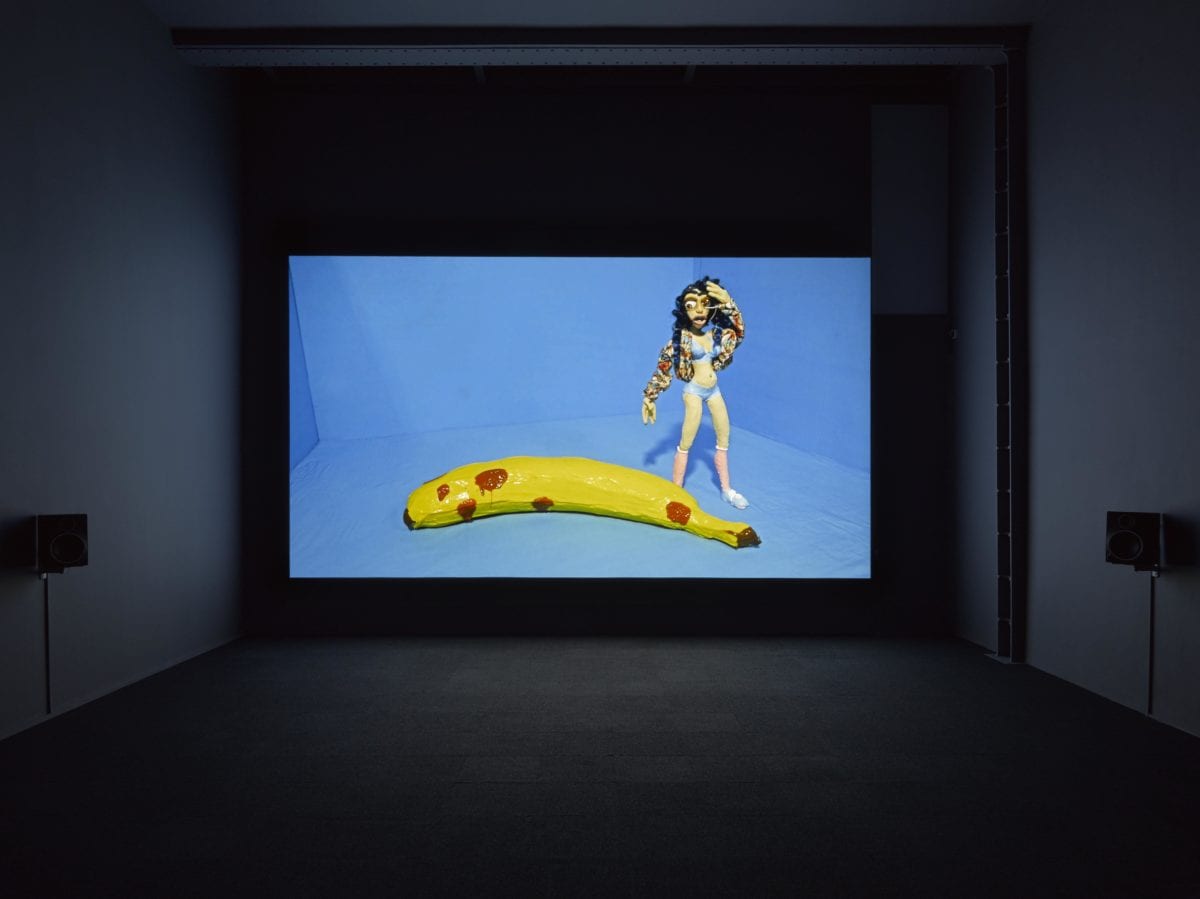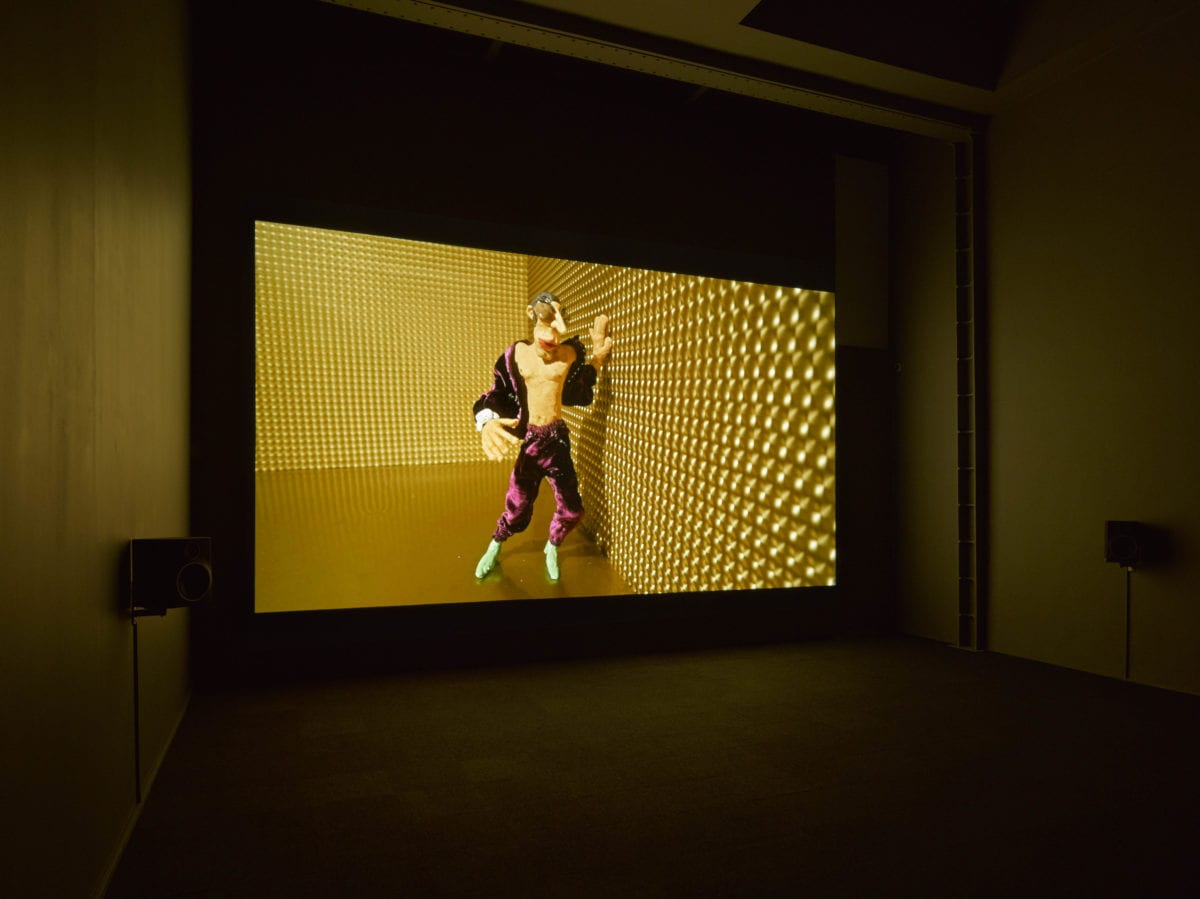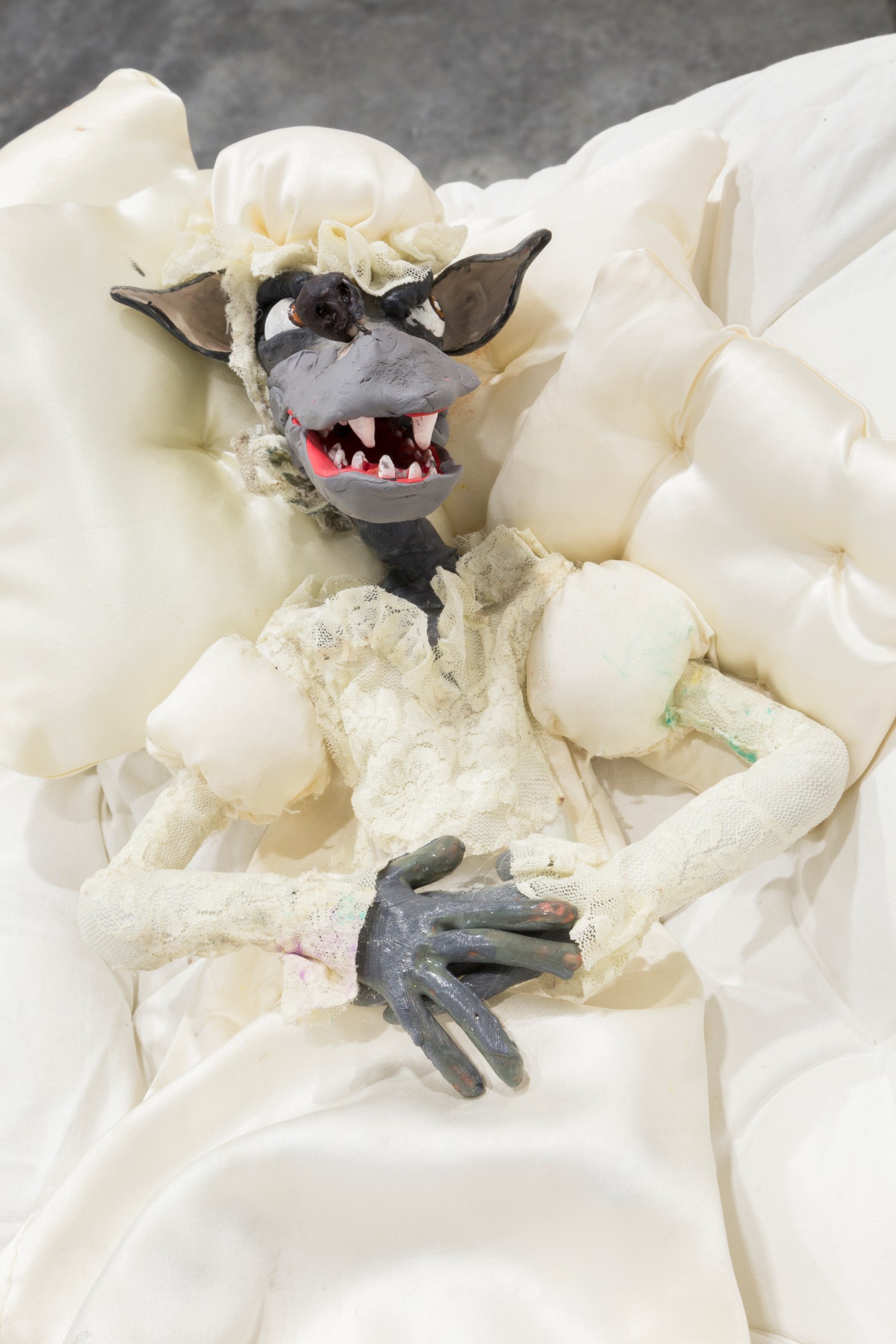
As I leave behind the sullen grey skies and bitter cold of Berlin’s streets to enter the home of Nathalie Djurberg and Hans Berg, which doubles as their studio, they are busily preparing for an exhibition at London’s Lisson Gallery. Animation edits are being refined, vinyl records are stacked high, and sculptures of big-bottomed moons, mischievous carrots and deviant My Little Pony dolls are staging their own orgiastic dramaturgy on a raised white platform. I remove my shoes to slip and slide on the shiny wood floor, socks offering no support.
Both artists were born in Sweden, and they met in Berlin in 2003. Djurberg was already working on her signature clay and plasticine animations, while Berg was making techno music. Together, their practice finds a way of accessing and physicalizing our most hidden (and often dark) desires, giving form and sound to these apparitions. During our conversation, sexuality, consciousness, choice and happiness are threads that constantly interweave, leading to a rich and energizing discussion—one that proves we can never really know how things will turn out when beginning a chilly winter’s day.
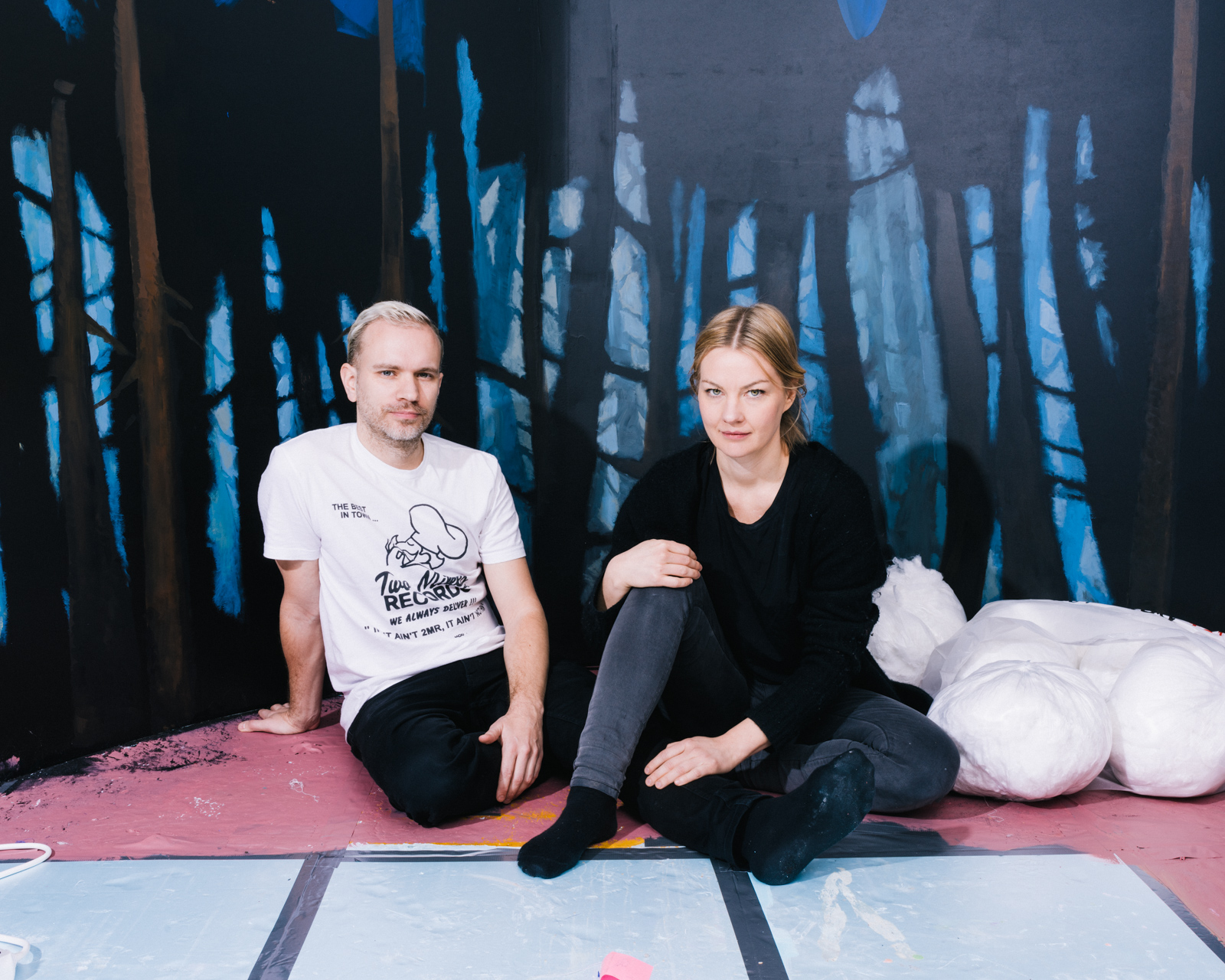
Many of your works present surreal or even absurdist approaches to ideas of sexuality. Why do you make work about that subject matter in particular?
ND: I think that much of my work deals with sexuality. The very first animations I did were about sexuality and desire. Sex is something that connects all humans and animals and is one of our most fundamental needs and instincts. For me, art is personal because it comes out of me, but I am really channelling what I see as basic human needs and desires, and visualizing every aspect of those desires—even those that could potentially be considered shameful or violent. The difference between Hans and me is that he’s very clear on most things and I am not
—sorry that I’m talking about you!
HB: Let’s see if I agree…
ND: I identify easily with a variety of characters. I say: “Oh, that could be me, I could have done that.” I internally examine whether I would have done that, if I was in that situation, with that background and mostly I answer a probable yes. I never feel sure of what I’m really like—how the external and internal versions of myself align or diverge. But Hans is always sure of who he is. For me, I’m much more amorphous, I could be anything and perform anyone—that is what you see in the work. I am performing those characters, so to speak. For our exhibition [at Lisson Gallery] there are three animations: the third title we stole from Pink Floyd, The Dark Side of the Moon (2017), because it’s about secrets. The first film, Worship (2016) is about exposing the superficiality of the world today; scraping away at it and exposing its underbelly. When you look at music videos (particularly hip hop), which often appear shallow and objectify the female body, it seems as though it is misogynistic and against women. But if you scrape away the surface and look at its essence, it’s about worship. So for me, that work is about exploring how worship relates to desire—what happens when I peel away the layers or divisions between desire, sexuality and worship.
“If you’re using a medium that doesn’t have that much history, it can give mental freedom”
HB: None of the videos are actually explicit. It feels explicit but it’s not.
So it’s about creating a certain mood.
ND: The second animation, Delights of an Undirected Mind (2016) is about when you’re little and you start feeling sexual, but there’s no direction to it or assumption about what sexuality is or should be—it is instinctual. The work is thus [akin to] raw desire, sexuality that never left the initial early state, never developed from adolescence to adulthood. Every animation is more about the feeling that it evokes than what is really happening or being depicted. I get asked sometimes what I want to say with the work, as if I have a specific and clear message, like a preacher of sorts. But it’s not about that. If you are a preacher, you have to believe that you know more than someone else.
HB: It’s about exploring.
ND: I feel like I don’t have anything to teach anyone. It’s just a point of view.

It’s interesting that you say your work is about feeling rather than narrative content per se, particularly because that is a profound aspect of music—the feeling it creates.
HB: Music is so open-ended. It’s often about feeling, not about this intellectual pursuit.
What’s your starting point for an animation and at which point do the music and imagery begin to interweave?
HB: With the film, it’s some idea Nathalie has; some thought.
ND: It’s often just there, nagging at me. If I haven’t been able to let go of an idea or issue, that’s usually when I have the urge to begin working on a new animation. I start to look for the solution to that issue. If I can’t find the solution or resolution somewhere else outside of me, in other people’s art, music or film, then it becomes an idea that goes into the work.
HB: But if it’s some burning question inside you, you can’t solve that by consuming something outside of yourself.
ND: When you can’t, it’s like an obsession and then the idea forms. For me the most interesting thing about art is the process that goes into making it, to see the various paths it takes; to think it was going in one direction and then suddenly it veers off in another direction. You have to trust that and follow it.
Will you discuss the idea together or do you work quite independently? When does the dialogue begin?
HB: It begins pretty early, but not really about the work. I think the dialogue is about the obsession and things around it.
ND: Yes, about the obsession or the conflict. I often ask myself, “If there was a perfect world and it was happy, would I still make art?” For me, it’s about examining and revealing something in myself that I am not able to reveal in any other way. I expose aspects of myself in order to get at the heart of the human condition.
But no one could ever be totally happy. The broad spectrum of our emotions is what makes us human.
ND: Sure, but if you’re not happy it’s impossible not to seek happiness. Also, there is great beauty in the difficult moments. Happy moments just pass by, there is no glue to them, no need to examine or correct. There’s a lot of violence in the animations and then there’s moments of tenderness or beauty, it becomes so heightened, so magnified. It’s about that polarity.
- Who Am I to Judge, or, It Must Be Something Delicious, 2017 Installation View
I’ve just been writing about Michel Eugène Chevreul and his contrasting colour theory that when colours are observed adjacently they directly influence one another. It’s the same concept.
HB Which goes for everything, in a way.
How do you approach the making of sound for your animations Hans?
HB: When she [Nathalie] starts animating, I begin to think of ideas of what the music could be. It’s easy to just think about the music in your mind, as it’s all so open at that stage. But when you actually start working on it, you make one decision and it just continually narrows down. I think it’s the same for Nathalie.
ND: Yes, I think it’s like my own process but sped up by a hundred times, because my work takes such a long time. Hans might despair about the music for a few days, and in another few days it will be done.
HB: Yes, it’s quick, but it’s always the same process. In the beginning I think: “It’s horrible, it’s so bad,” and then suddenly two days later it’s like: “Oooh, this is good.”
ND: You have to deconstruct the ideas that you have when you started making it.
So there’s a different time ratio when it comes to the music and the animation?
HB: Completely different. It’s so much faster to make music than it is to take all the pictures.
ND: With the animation you sit, then you move it, take a picture, and then move it some more, and so on and so on.
How did you begin to work together?
ND: We met here in Berlin through a mutual friend, and she suggested that he make music for me. Beforehand, I had tried to make music on my own, which is now laughable. Initially, I gave him a finished animation and said: “Oh, see what you can do with this.” What he did changed it completely. It added another layer; it changed the film. It was what I had wanted to do, but hadn’t been able to make on my own.
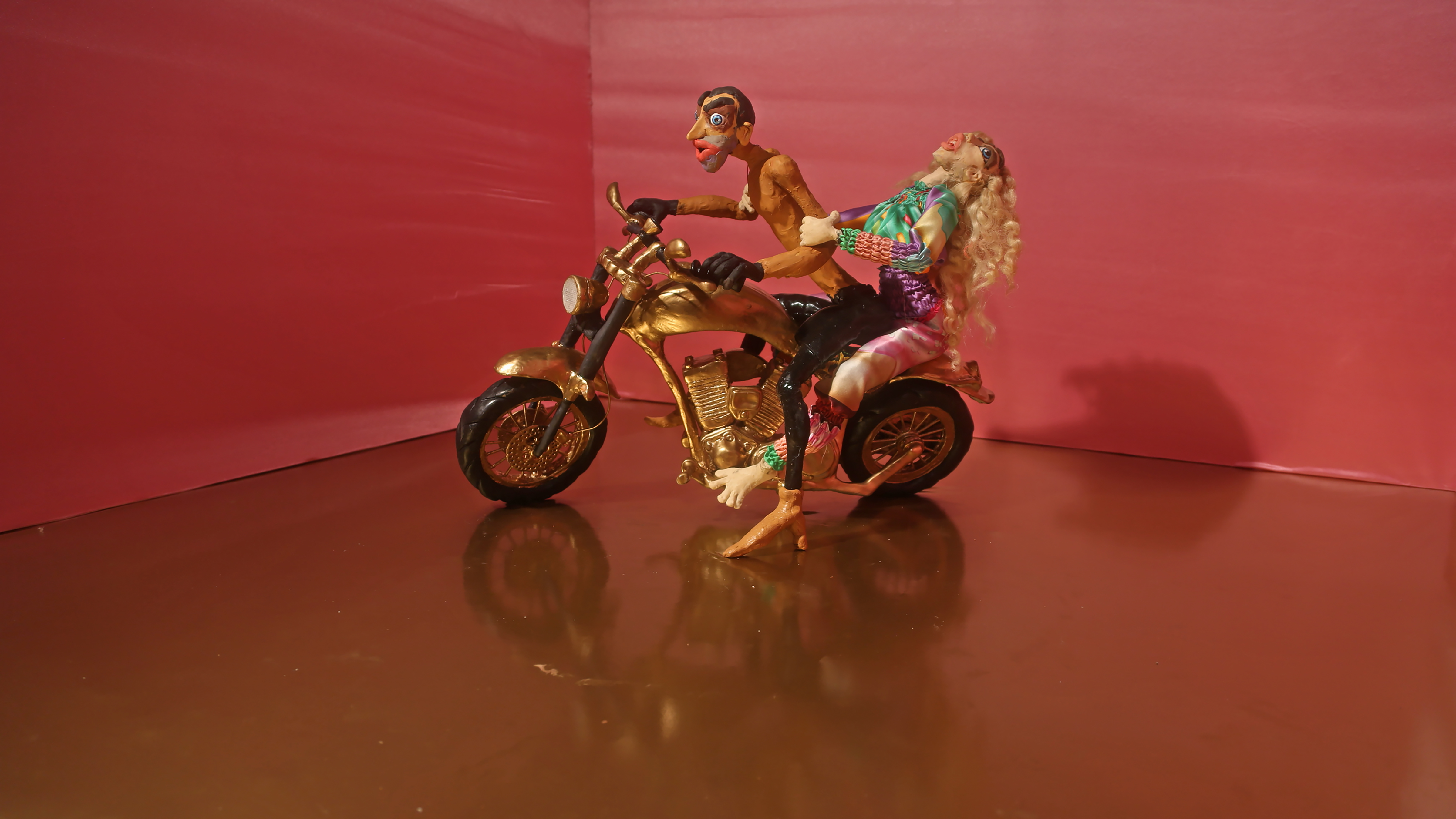
HB: It’s about enhancing the emotion. All music is emotional, although sometimes you don’t evoke the emotions that you think you’re going to in people.
ND: So then I just gave him another one, and another one. For a while, I was quite decisive about what I wanted—drums for this one—and it came to a point where I hadn’t really realized that I could let go of the responsibility. I had an animation where I was very sure of what I wanted; Hans did what I wanted, and it turns out it was not what I wanted! It didn’t work at all. So then I realized that music was not my thing and that he can do it much better without me. That was like freedom for me.
How do you discuss the work together?
HB: It’s so sensitive to play something early on. It might be just an idea—a tenth of what it’s going to be—and you don’t think it’s good yet.
ND: You have to be really careful not to destroy the other person’s process. I feel like a few times I did destroy his process, or made him unsure about it. So you have to hold back. But it’s the same the other way, sometimes I have an idea where I really want to do this, and Hans is like [makes an unsure face].
So you have to be mindful of each other?
HB: Definitely. When we’re discussing ideas, it can be difficult. It’s so sensitive and open, as if someone comes and pokes you.
ND: Sometimes you just don’t know where it’s going to end up. We almost never talk in terms of: “What are you doing now? This, this, this.” It’s never like that; we’re always talking around it, not really touching the subject exactly. That’s a natural process, not touching it. In a way, if I was able to describe in words what I’m doing, then I wouldn’t make animations, I would just use the words.
Visual art is often ineffable, demarcating something that words can’t quite touch or describe.
HB: It’s so fascinating because with words you can do other things that you can’t do with music or with images. I think it’s extremely interesting how different things can be expressed in different ways. It’s the combination of images and music that makes it so great because it’s emotional, but it also starts as an intellectual thought process. You’re influenced by the music faster because it hits you more quickly than images, which you have to process with time.
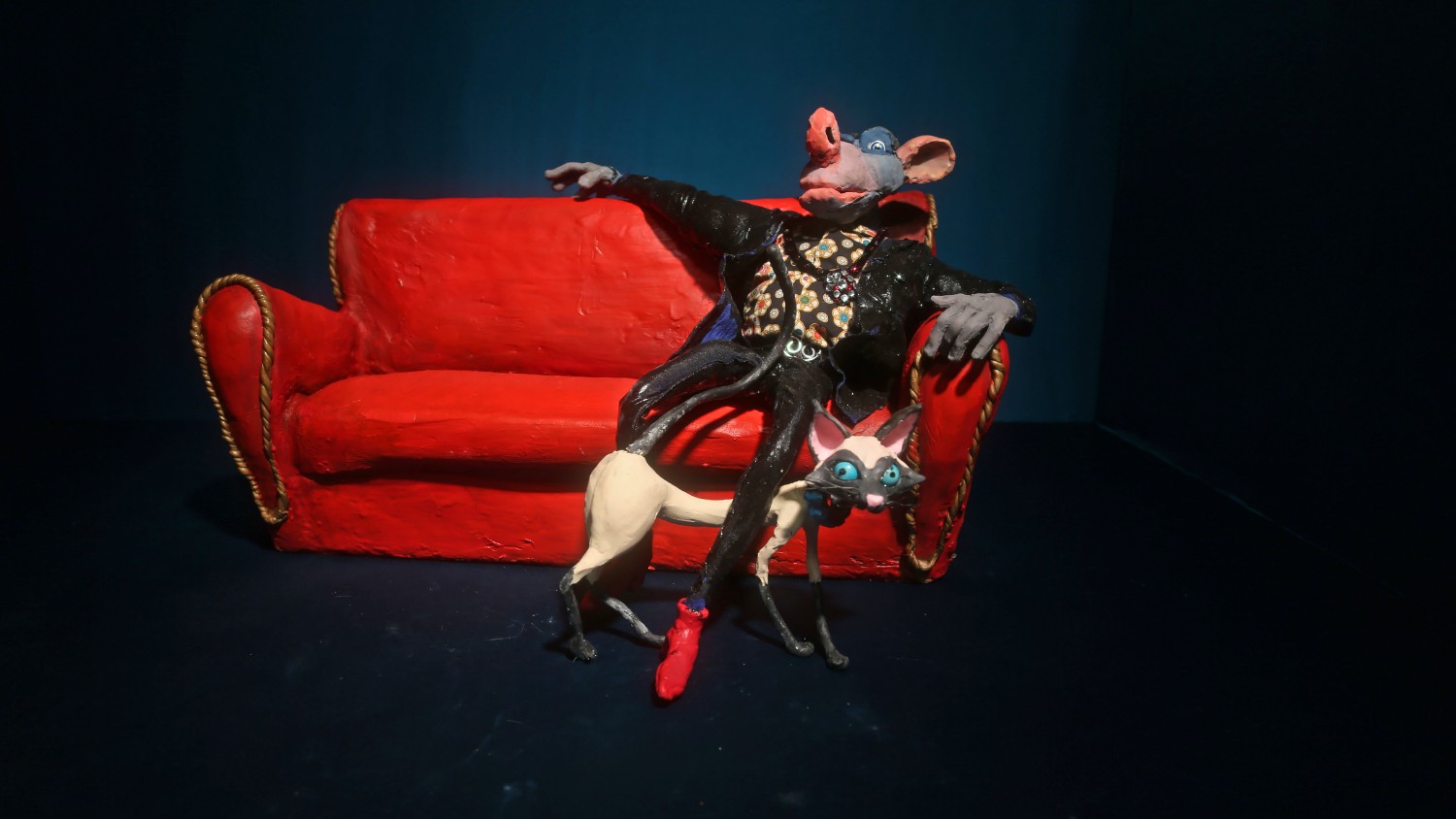
I’m interested to hear that the music and image arrangement doesn’t necessarily arise from a direct conversation between the two of you. It’s more roundabout, and stems from your relationship with one another.
ND: I think it’s also because we have the same background. Even though I went to an art academy, I taught animation to myself. In the beginning it was so experimental and the work was very simple. Even moving the camera and understanding that I could edit it in the camera was like: “Oh wow.” So that meant that the ideas always came first and the technical ability dragged behind. So it’s a question of technique alongside ideas, thinking, “Okay, so how do I do this to realize the idea?”
So it’s about the purity of an idea and how best to communicate that?
ND: Yes, but somehow it’s also laziness. Even now, I could take courses that would make me much more professional. But I don’t. I don’t really have an interest in that.
That can produce such unique, interesting and idiosyncratic approaches to work. I’ve just finished editing a book Vitamin C: Clay & Ceramics in Contemporary Art (Phaidon), in which you both feature. Because so many clay and ceramics departments closed in art schools in the 1980s [particularly in the UK], many artists are not formally trained in how to use the medium, and that has produced very unique approaches to making.
ND: Exactly. In terms of animation, there is a history, but the history of art and animation is not very long. It’s not like painting, which goes back to the start of civilization. Of course you’re always free to do whatever you want: art is the place to do that; but it’s difficult not to look back at history. So if you’re using a medium that doesn’t have that much history, it can give mental freedom. Or at least for someone like me. Some artists don’t have a problem with that, or love that history, referencing back and back.
Damien Hirst said he could hardly even contemplate making work once he had seen the paintings of Francis Bacon.
HB: Yes, sometimes it’s like that with music. Sometimes I think, “There’s just so much good music out there.”

ND: I’m interested in the idea of choice. Everyone thinks and feels that they make a choice and that it can shape their reality. But actually, research suggests that the choice is already made for you. For me, that idea gives me a lot of freedom. I have a brother who studies consciousness science—philosophy, psychology and a lot of neuroscience—and for him, reading about this subject where there is no choice—that you never made a choice, you only believe that you made a choice—is incredibly difficult because he really wants to be in charge.
HB: You could enter a life crisis just from studying!
ND: If you look at it from the perspective of spirituality, or think in terms of non-duality, they say the same thing. There’s not really a choice. But even if you could actually make a choice, you could never know where that choice is going to lead because there are so many, many different potentialities.
So you think we’re not in control?
ND: No, I think we’re completely out of control, with the illusion of control. And that’s fine; I have the illusion of control too.
HB: It’s practical, maybe.
ND: There is a point where my brother and I start fighting. If you say you have no control and, for example, you don’t have any money, then you could go out and do whatever you wanted to. But it’s like, no, would you really do that?
Well, that’s a question of where morality sits within this concept of individual control. Lack of control shouldn’t necessarily equal lawlessness or chaos.
ND: It’s more about instinct and what you’re pulled towards. If you remove those layers of difficulty in yourself then you wouldn’t necessarily do those [bad] things.
[The photographer Ériver Hijano arrives.]
EH: There’s a new paper and TED Talk that’s been published by philosopher Dan Dennett which is called The Illusion of Consciousness. It’s actually this exact argument. Although they’re trying to figure out what the evolutionary point of consciousness is. We don’t really need consciousness, there’s no explanation for it. One of the things is the ability to organize and converse, tied to language, and there’s also this sense of freedom being tied to responsibility—that if people believe that everything is predetermined then they’re more prone to act poorly and immorally.
ND: That’s so interesting. Referring back to our work and how we’re pretty similar, Hans learned to make music the same way I learned animation. He started DJing by having two tape recorders next to each other.
HB: I was trying to make mixtapes.
ND: Was that a choice then? There’s not really a choice. There’s just an interest, and that interest pulls you in a very specific direction. I can see that with animation; I think I know how it’s going to look, how it’s going to be made and in the end, I don’t. It’s so shocking that the mind thinks it knows.
This feature originally appeared in issue 33
BUY ISSUE 33
